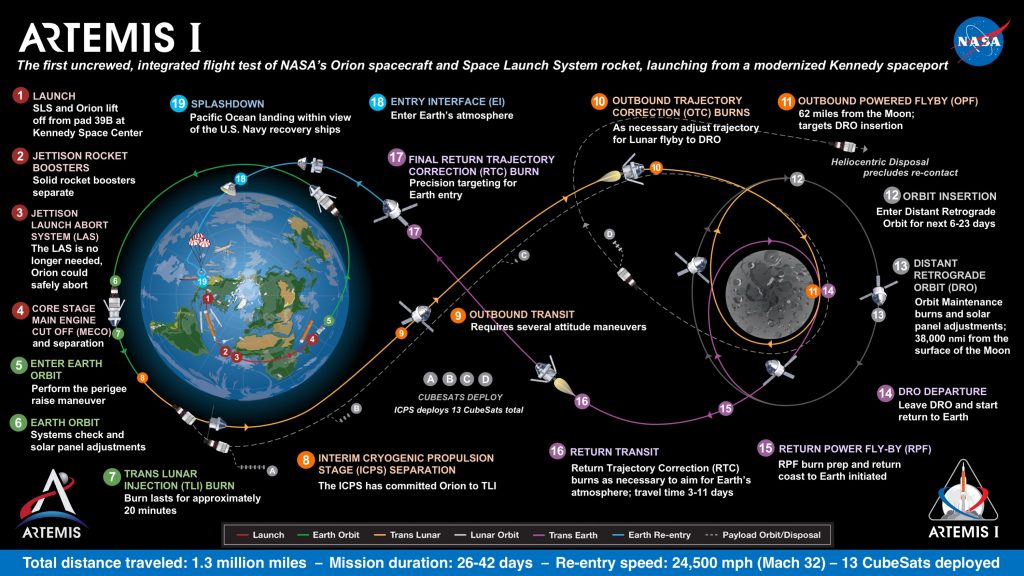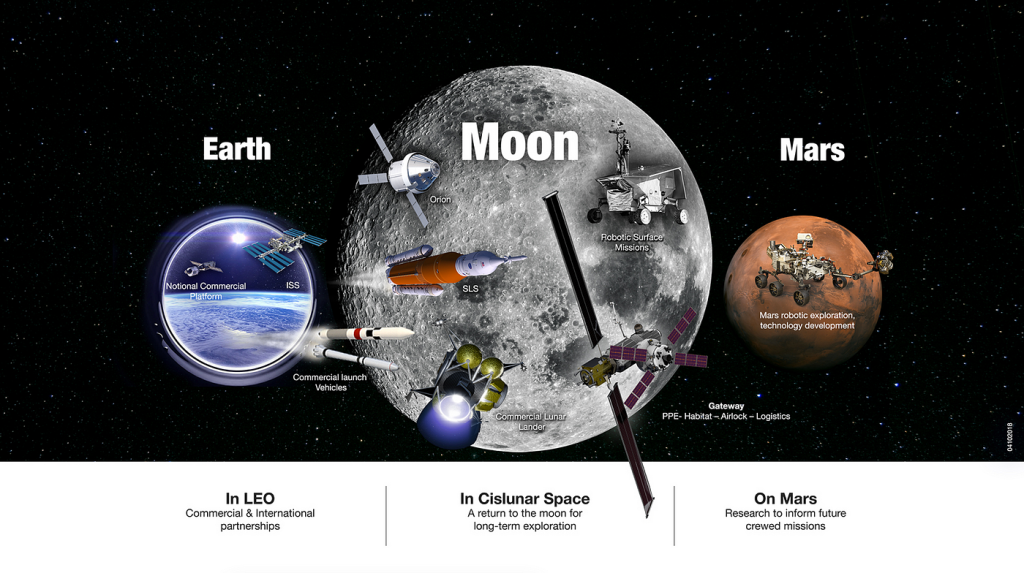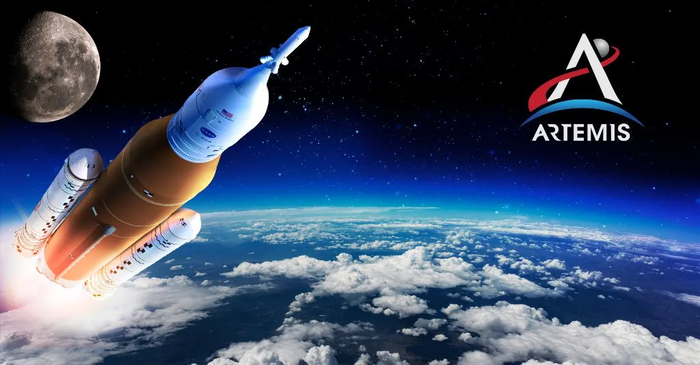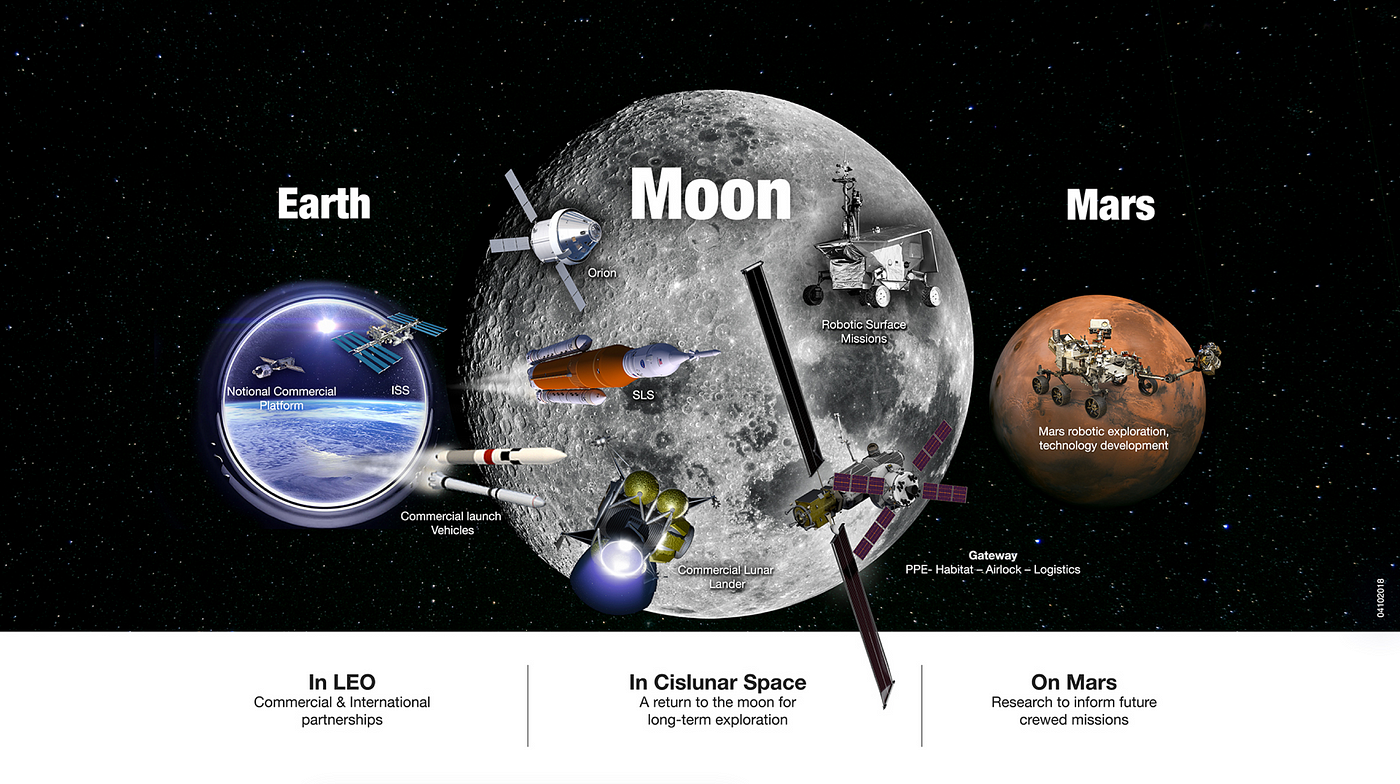The Artemis program is NASA’s ambitious initiative to return humans to the Moon and lay the groundwork for deep space exploration, including future missions to Mars. After the success of Artemis I, the program is set to enter its next phases, bringing astronauts back to the lunar surface for the first time in over 50 years. But what exactly does the future hold for Artemis? Join us on spaceyv.com as we explore NASA’s roadmap for humanity’s next great leap in space exploration. stay with Spaceyv
The Vision of Artemis Program: Beyond Apollo
Unlike the Apollo missions, which primarily focused on short-term lunar visits, the Artemis program aims for long-term lunar exploration. NASA’s vision includes building a sustainable human presence on the Moon, leveraging resources such as lunar water ice, and developing technologies that will enable future Mars missions. With international collaboration and private-sector involvement, Artemis is not just about returning to the Moon—it’s about preparing for the next era of human spaceflight.
A Look Back: The Success of Artemis I
Artemis I, the first uncrewed test mission of the program, successfully launched in November 2022, sending the Orion spacecraft on a 25-day journey around the Moon before safely returning to Earth. This mission was a crucial step in validating the Space Launch System (SLS) rocket and Orion’s deep-space capabilities. The success of Artemis I set the stage for crewed missions, ensuring that NASA’s hardware and flight systems are ready for human exploration.

Artemis II: The First Crewed Lunar Flyby (Planned for 2025)
The next major step in the Artemis program is Artemis II, which will be the first crewed mission of the program. This mission will send four astronauts on a journey around the Moon, similar to Apollo 8, but with advanced technology and safety systems.
Key Objectives of Artemis II:
- Test life support and navigation systems in deep space.
- Assess Orion’s capabilities with a human crew on board.
- Prepare for a future lunar landing by demonstrating operational procedures.
The Artemis II crew includes Commander Reid Wiseman, Pilot Victor Glover, Mission Specialist Christina Koch, and Canadian astronaut Jeremy Hansen. This marks the first time a non-American astronaut will fly to the Moon as part of NASA’s lunar exploration efforts.
Artemis III: The First Lunar Landing Since Apollo (Planned for 2026)
Artemis III will mark the first human landing on the Moon since Apollo 17 in 1972. The mission will send astronauts, including the first woman and the first person of color, to the lunar south pole, a region rich in water ice that could be used for future space missions.
Mission Highlights:
- Use of SpaceX’s Starship Human Landing System (HLS) for descent to the Moon.
- Exploration of the lunar south pole to study ice deposits.
- First extended stay on the lunar surface, with astronauts spending about a week on the Moon.
Artemis IV and Beyond: The Gateway to Deep Space
Artemis IV (Planned for 2028)
This mission will be the first to deliver astronauts to Lunar Gateway, a planned space station orbiting the Moon. The Gateway will serve as a staging point for future missions, enabling sustainable lunar exploration and supporting deep-space operations.
Artemis V and Artemis VI
- Further development of the Moon base camp, where astronauts will stay for extended missions.
- Expansion of lunar surface operations with rovers and habitats.
- Increased international and commercial collaboration.

Lunar Gateway: The Space Outpost Beyond Earth
The Lunar Gateway is a key part of NASA’s long-term plan. This small space station will orbit the Moon and provide:
- A docking station for astronauts traveling to and from the lunar surface.
- A research lab for deep-space experiments.
- A hub for international space agencies, including contributions from Europe, Japan, and Canada.
The Gateway will be built and launched in phases, with Artemis IV delivering its first major modules.
How Artemis Prepares Us for Mars
NASA sees the Moon as a “proving ground” for future Mars exploration. Artemis will help develop technologies needed for long-duration space missions, such as:
- Sustainable habitats for astronauts.
- Lunar resource utilization (e.g., extracting water from the Moon).
- Advanced propulsion systems for deep-space travel.
By perfecting these technologies on the Moon, NASA aims to send astronauts to Mars in the 2030s.
Challenges Facing the Artemis Program
While Artemis is an exciting step forward, it also faces major challenges, including:
- Budget constraints: Developing new spacecraft, landers, and habitats requires massive funding.
- Technical hurdles: The Starship Human Landing System and Lunar Gateway need further testing and refinement.
- Spaceflight risks: Sending humans beyond low Earth orbit involves radiation exposure and long-duration health concerns.
Despite these challenges, NASA remains committed to making Artemis a success.

Final Thoughts: A New Era of Space Exploration
The Artemis program represents a historic shift in human spaceflight. Unlike Apollo, which ended after a few missions, Artemis is designed for permanent lunar exploration. It will pave the way for future generations to live and work beyond Earth.
At spaceyv.com, we continue to follow the latest updates on Artemis and space exploration. As the program advances, humanity moves one step closer to becoming an interplanetary species.
Stay tuned for more cosmic discoveries and the next chapter in space history!
What do you think?
Are you excited about NASA’s return to the Moon? What challenges do you think Artemis will face? Share your thoughts in the comments below!



